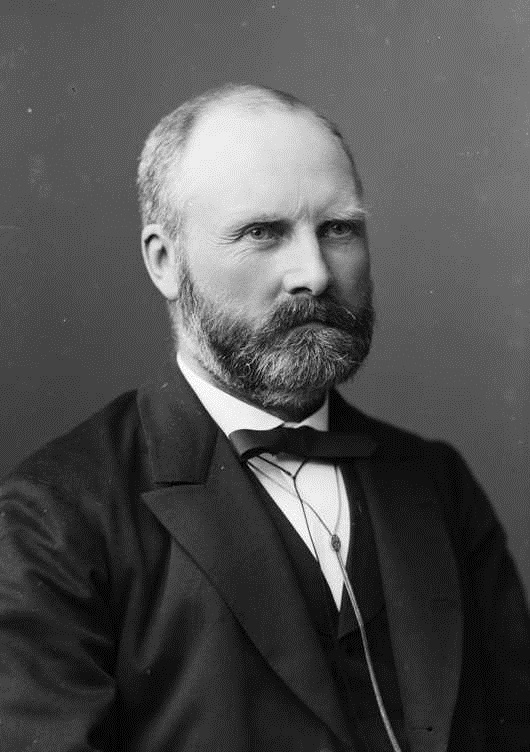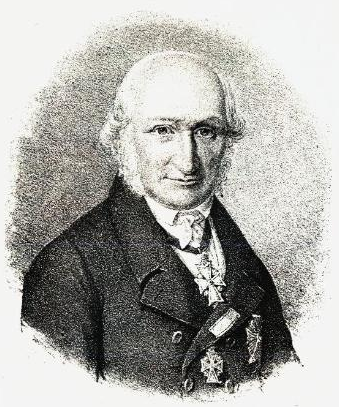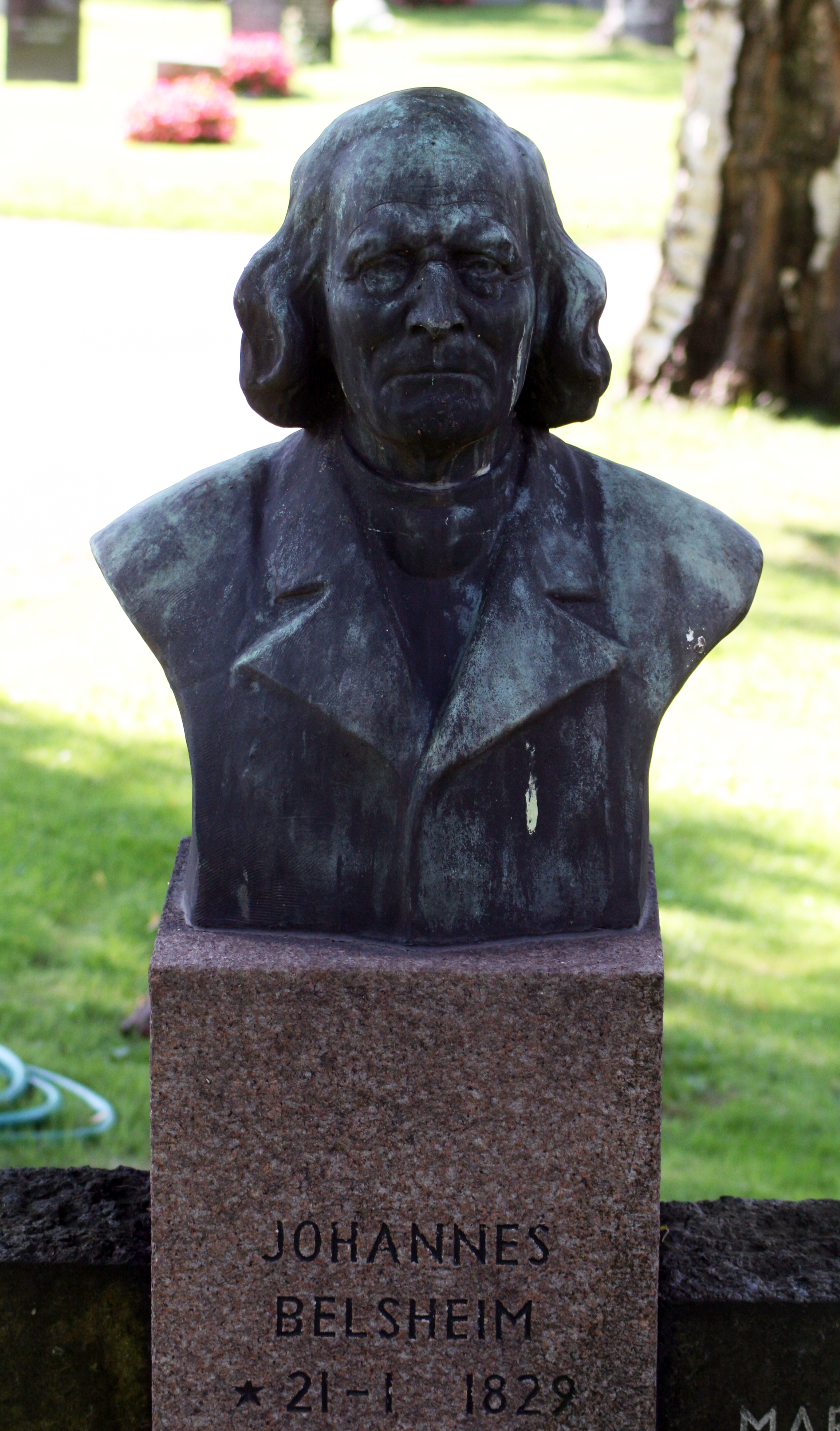|
Elias Blix
Elias Blix (24 February 1836 – 17 January 1902) was a Norwegian professor, theologian, hymn writer, and a politician for the Liberal Party. Blix wrote numerous hymns and was largely responsible for translating the New Testament into the Norwegian language. Biography Born on Sandhornøy Gildeskål, Salten, in Nordland County, Norway. He attended a teacher seminary in Tromsø (1853–1855). After some years as a teacher in Tromsø, he moved to Christiania for studies in 1859. He was a student of Semitic languages. Blix graduated in 1860 and received his theological degree in 1866 and earned a '' Dr. philos.'' in 1876. Blix worked as a teacher for 25 years at the University of Oslo, where he taught Hebrew and Bible studies. Blix was Minister of Education and Church Affairs in the Cabinet of Johan Sverdrup from 1884 to 1888, interrupted by a period as member of the Council of State Division in Stockholm in 1885–86. Blix was also a proponent of the Nynorsk language, as w ... [...More Info...] [...Related Items...] OR: [Wikipedia] [Google] [Baidu] |
Nokre Salmar
''Nokre salmar'' (Some Hymns) was the first Nynorsk hymnal. It was published anonymously by Elias Blix. The volume was first issued as smaller booklets, with the first in 1869, and then in 1870 and 1875, and then in an expanded version in 1883 published by Det Norske Samlaget. On March 4, 1892 ''Nokre Salmar'' was authorized for use in public worship, and these Landsmål hymns were then incorporated into Landstad's hymnal as nos. 635 to 791. In 1908, the ''Liturgical Readings and Agenda for the Church of Norway'' (''Tekstbok og altarbok for den norske kyrkja'') in Peter Hognestad's translation was authorized for public use. In addition, the litany and pulpit hymns were also authorized, and in later editions these were added in what was known as the "Blix Supplement" as nos. 785 to 791. The first churches to adopt Blix's hymnal were Ranem Church and Skage Church in the parish of Namdal in the municipality of Overhalla in 1892. By 1901, 76 parishes had done so, and this number gre ... [...More Info...] [...Related Items...] OR: [Wikipedia] [Google] [Baidu] |
Ministry Of Education And Research (Norway)
The Royal Ministry of Education and Research ( no, Det kongelige kunnskapsdepartement; short name ''Kunnskapsdepartementet'') is a Norwegian government ministry responsible for education, research, kindergartens and integration. The ministry was established in 1814 as the Royal Ministry of Church and Education Affairs. The current Minister of Education is Tonje Brenna of the Labour Party and the current Minister of Research and Higher Education is Ola Borten Moe of the Centre Party. The department reports to the legislature (Stortinget). History The ministry was established in 1814, following the dissolution of Denmark–Norway, in which the joint central government administration of the two formally separate but closely integrated kingdoms, had been based in Copenhagen. Originally named the Ministry of Church and Education Affairs, the ministry was the first of six government ministries established in 1814, and was also known as the First Ministry. The other ministries were ... [...More Info...] [...Related Items...] OR: [Wikipedia] [Google] [Baidu] |
Norwegian Ministry Of Education And Research
The Royal Ministry of Education and Research ( no, Det kongelige kunnskapsdepartement; short name ''Kunnskapsdepartementet'') is a Norwegian government ministry responsible for education, research, kindergartens and integration. The ministry was established in 1814 as the Royal Ministry of Church and Education Affairs. The current Minister of Education is Tonje Brenna of the Labour Party and the current Minister of Research and Higher Education is Ola Borten Moe of the Centre Party. The department reports to the legislature (Stortinget). History The ministry was established in 1814, following the dissolution of Denmark–Norway, in which the joint central government administration of the two formally separate but closely integrated kingdoms, had been based in Copenhagen. Originally named the Ministry of Church and Education Affairs, the ministry was the first of six government ministries established in 1814, and was also known as the First Ministry. The other ministries were ... [...More Info...] [...Related Items...] OR: [Wikipedia] [Google] [Baidu] |
Elias Blix OB
Elias is the Greek equivalent of Elijah ( he, אֵלִיָּהוּ ''ʾĒlīyyāhū''; Syriac: ܐܠܝܐ ''Eliyā''; Arabic: الیاس Ilyās/Elyās), a prophet in the Northern Kingdom of Israel in the 9th century BC, mentioned in several holy books. Due to Elias' role in the scriptures and to many later associated traditions, the name is used as a personal name in numerous languages. Variants * Éilias Irish * Elia Italian, English * Elias Norwegian * Elías Icelandic * Éliás Hungarian * Elías Spanish * Eliáš, Elijáš Czech * Elias, Eelis, Eljas Finnish * Elias Danish, German, Swedish * Elias Portuguese * Elias, Iliya () Persian * Elias, Elis Swedish * Elias, Elyas Ethiopian * Elias, Elyas Philippines * Eliasz Polish * Élie French * Elija Slovene * Elijah English, Hebrew * Elis Welsh * Elisedd Welsh * Eliya (එලියා) Sinhala * Eliyas (Ілияс) Kazakh * Eliyahu, Eliya (אֵלִיָּהוּ, אליה) Biblical Hebrew, Hebrew * Elyās, Ilyās, Eliya (, ) ... [...More Info...] [...Related Items...] OR: [Wikipedia] [Google] [Baidu] |
Ole Tobias Olsen
Ole Tobias Olsen (18 August 1830 – 6 July 1924) was a Norway, Norwegian teacher and minister. He is best known as the father of the Nordland Line between Trondheim and Bodø in Nordland county, Norway. Biography Olsen was a teacher at Tromsø during 1851 followed by service at Hadsel in Vesterålen and Oslo, Kristiania, now Oslo in 1855. He earned his theological degree in 1865. In 1870, he received a scholarship to collect local fairy tales, folklore and folk tunes from Rana, Norway, Rana. He was vicar and mayor of Hattfjelldal from 1883 to 1904. In 1905, he moved to Kristiania where he lived until his death. In early 1870, he had undertaken a preliminary study of a proposed railway line eastwards from Mo i Rana. He first proposed in construction of the 729 km. long Northern Line railway from Bodø to Trondheim in ''Morgenbladet'' during 1872. He was a member of Nordland County Railway Commission from 1885. In 1919, he was knighted 1st class in the Order of St. Olav. In ... [...More Info...] [...Related Items...] OR: [Wikipedia] [Google] [Baidu] |
Norsk Biografisk Leksikon
is the largest Norwegian biographical encyclopedia. The first edition (NBL1) was issued between 1921 and 1983, including 19 volumes and 5,100 articles. It was published by Aschehoug with economic support from the state. bought the rights to NBL1 from Aschehoug in 1995, and after a pre-project in 1996–97 the work for a new edition began in 1998. The project had economic support from the Fritt Ord Foundation and the Ministry of Culture, and the second edition (NBL2) was launched in the years 1999–2005, including 10 volumes and around 5,700 articles. In 2006 the work for an electronic edition of NBL2 began, with support from the same institutions. In 2009 an Internet The Internet (or internet) is the global system of interconnected computer networks that uses the Internet protocol suite (TCP/IP) to communicate between networks and devices. It is a '' network of networks'' that consists of private, pub ... edition, with free access, was released by together with ... [...More Info...] [...Related Items...] OR: [Wikipedia] [Google] [Baidu] |
Matias Skard
Matias Skard (28 May 1846 – 28 July 1927) was a Norwegian philologist, educator, psalmist, essayist and translator. Biography Matias Olsen Skard was born on a family farm at Øyer in Gudbrandsdal, Norway. He had planned to study theology but rather began his career as a teacher. He taught at the Latin School in Lillehammer from 1864 to 1868 and at Folk High Schools in Nord-Trøndelag from 1877 to 1881. He chaired the Vonheim Folk High School founded by Christopher Bruun Christopher Arndt Bruun (23 September 1839 – 17 July 1920) was a Norwegian priest and educator. Biography He was born in Kristiania (now Oslo), Norway. He was a son of jurist Johan Peter Bruun (1810–1843) and Line Stenersen (1816–1901). Af ... in Østre Gausdal from 1884 to 1890. From 1886 to 1890, he was also co-editor of the newspaper '' Framgang''. He taught at the Teacher's College in Levanger from 1892 to 1901. In 1901, he was appointed school director in Kristiansand, a position he retaine ... [...More Info...] [...Related Items...] OR: [Wikipedia] [Google] [Baidu] |
Johannes Belsheim
Johannes Engebretsen Belsheim (21 January 1829 – 15 July 1909) was a Norwegian teacher, priest, translator and biographer. Johannes Belsheim was born in the village of Thorpegardane at Vang in Oppland. He attended Asker Seminary in Akershus. Belsheim took matriculation in 1858. He attended Heltberg's school which prepared students for admission exams at the university and in 1861 he took his Degree in Theology. He was a teacher in Grue in Solør from 1856 and at Porsgrunn in Telemark during 1862. He served as rector of Vefsn teacher's college (''Vefsn lærerskole'') in Nordland during 1863. He was assigned as vicar in Sør-Varanger in 1864 and at Bjelland in Vest-Agder from 1870 to 1875. As a writer, his topics covered several themes. He is principally associated with his studies of Biblical manuscripts, including the ''Codex Aureus'', '' Codex Gigas'', Codex Corbeiensis I, Codex Palatinus, Codex Veronensis, and Codex Claromontanus V The Codex Claromo ... [...More Info...] [...Related Items...] OR: [Wikipedia] [Google] [Baidu] |
Church Of Norway
The Church of Norway ( nb, Den norske kirke, nn, Den norske kyrkja, se, Norgga girku, sma, Nöörjen gærhkoe) is an evangelical Lutheran denomination of Protestant Christianity and by far the largest Christian church in Norway. The church became the state church of Norway around 1020, and was established as a separate church intimately integrated with the state as a result of the Lutheran reformation in Denmark–Norway which broke ties with the Holy See in 1536–1537; the King of Norway was the church's head from 1537 to 2012. Historically the church was one of the main instruments of royal power and official authority, and an important part of the state administration; local government was based on the church's parishes with significant official responsibility held by the parish priest. In the 19th and 20th centuries it gradually ceded most administrative functions to the secular civil service. The modern Constitution of Norway describes the church as the country's "peo ... [...More Info...] [...Related Items...] OR: [Wikipedia] [Google] [Baidu] |
Nynorsk
Nynorsk () () is one of the two written standards of the Norwegian language, the other being Bokmål. From 12 May 1885, it became the state-sanctioned version of Ivar Aasen's standard Norwegian language ( no, Landsmål) parallel to the Dano-Norwegian written language (''Riksmål''). Nynorsk became the name in 1929, and it is after a series of reforms still a variation which is closer to , whereas Bokmål is closer to ''Riksmål'' and Danish. Between 10 and 15 percent of Norwegians (Primarily in the west around the city of Bergen,) have Nynorsk as their official language form, estimated by the number of students attending ''videregående skole'' (secondary education). Nynorsk is also taught as a mandatory subject in both high school and elementary school for all Norwegians who do not have it as their own language form. History Danish was the written language of Norway until 1814, and Danish with Norwegian intonation and pronunciation was on occasion spoken in the cities (see Da ... [...More Info...] [...Related Items...] OR: [Wikipedia] [Google] [Baidu] |
Store Norske Leksikon
The ''Great Norwegian Encyclopedia'' ( no, Store Norske Leksikon, abbreviated ''SNL''), is a Norwegian-language online encyclopedia. The online encyclopedia is among the most-read Norwegian published sites, with more than two million unique visitors per month. Paper editions 1978–2007 The ''SNL'' was created in 1978, when the two publishing houses Aschehoug and Gyldendal merged their encyclopedias and created the company Kunnskapsforlaget. Up until 1978 the two publishing houses of Aschehoug and Gyldendal, Norway's two largest, had published ' and ', respectively. The respective first editions were published in 1907–1913 (Aschehoug) and 1933–1934 (Gyldendal). The slump in sales for paper-based encyclopedias around the turn of the 21st century hit Kunnskapsforlaget hard, but a fourth edition of the paper encyclopedia was secured by a grant of ten million Norwegian kroner from the foundation Fritt Ord in 2003. The fourth edition consisted of 16 volumes, a t ... [...More Info...] [...Related Items...] OR: [Wikipedia] [Google] [Baidu] |



.png)

